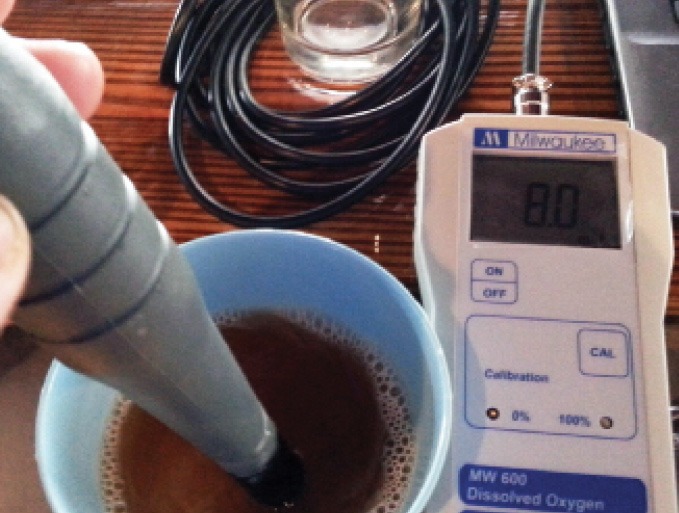How Water Minerals Change Through Brewing
It’s been 10 years since I last mimicked the water profiles of Burton-on-Trent for a batch of IPA and of Dublin for a stout. A city’s water profile is one key factor (along with local ingredients and taxation) primarily responsible for the evolution of an indigenous beer style. However, simply imitating a water report will neither recreate the water local brewers use nor optimize results.
When brewers calculate sulfate, chloride, and other minerals, they are targeting concentrations in mash and sparge water, not in finished beer. Calcium, carbonate, and magnesium affect pH, enzymes, protein coagulation, and yeast health, but do we really need to ensure 10 PPM magnesium for yeast health, or will the malt contribute enough? The importance of sodium, chloride, and sulfate is chiefly on the palate so it is their concentrations in the finished beer that matters. How do different recipes and brewing techniques affect these levels? Without measuring the minerals in the finished beer, we have no way to know!
Commercial NEIPA
The easiest way to ascertain the mineral profile of a finished beer is to send a sample to a testing laboratory such as Ward Labs. The table below lists results received by two homebrewers who sent commercial New England IPAs (NEIPAs) for Ward’s “Brewer’s Water Test.” The two beers sampled are favorites of mine: The Alchemist Brewing Co.’s Heady Topper (results from a post at www.homebrewtalk.com/showthread.php?t=481031) and Tree House Brewing Co.’s Alter Ego (obtained and emailed to me by Ryan Crook). While both breweries are in New England and brew IPAs, their approaches and results are markedly different. The Alchemist has a reputation for crisp bitterness from the hops and breadiness from Thomas Fawcett malts. Tree House is noted for its juicy hops and softer mouthfeel.
The measured minerals concentrations don’t align with any notion of a standard brewing water profile because of the contributions from malt, hops, and fermentation. We can only compare the profiles independent of their starting water profiles because neither brewery was willing to provide their water profile. The Alchemist appears to start with brewing water higher in sulfate and lower in chloride than Tree House, a contrast supported by the balances in the finished beers.
The importance of sodium, chloride, and sulfate is chiefly on the palate so it is their concentrations in the finished beer that matters.
Views on water treatment have shifted over the last few years. Chloride has gained popularity in IPAs where it had long been suggested only for malty styles. Chloride is one of the key factors in achieving the “pillowy” soft mouthfeel of NEIPAs and can even be responsible for reducing yeast flocculation (which may contribute to their hazy appearance). The typical range for chloride in the water of this proto-style is 100–200 PPM. I wasn’t expecting to see that doubled to 300 or 400 PPM in the finished beers!
John Kimmich, Co-owner and Brewer of The Alchemist, provided his unvarnished assessment of the trend, “As you can see from the results, I am in a definite camp when it comes to sulfate v. chloride. I have always said that I need a very definite mineral crispness to my IPAs. Most of the new wave of ‘NEIPA’ is most definitely in the other camp. I find a lot of those beers to have an overly soft finish that mutes bitterness, accentuates the fruitiness of the hops, and leaves me with a chalky finish that doesn’t suit my personal tastes.”
Mineral Analysis Water
I decided to investigate the change from water to beer by having Ward Labs run tests on both my treated water and the finished NEIPA I brewed with it. I treated all of the water for the mash and sparge together: Carbon-filtered Washington, DC tap water diluted with distilled water to reduce alkalinity, then dosed with 1.4 g/gal (0.37 g/L) of calcium chloride and 0.5 g/gal (0.13 g/L) of calcium sulfate.
I used 79% Rahr 2-row, 14% Weyermann pale wheat, 4% Gambrinus honey malt, 2% Bairds light carastan, and 1% Weyermann acidulated malt to result in a specific gravity of 1.060. Hops were BRU-1 and Experimental Stone Fruit. I fermented with White Labs WLP007 (Dry English Ale) yeast.
I aimed for more chloride than my standard NEIPA target of 150 ppm, but it measured even higher, likely because I assumed the annual average of 52 PPM chloride when the range the DC water report indicated 27 to 140 PPM. Many municipalities transition water sources throughout the year. Even if this is not done intentionally, water composition can change seasonally based on the amount of precipitation. The only way to avoid this variability is to begin with low mineral water, such as reverse osmosis or distilled (if you aren’t lucky enough to live in an area with naturally low-mineral water like Portland, Oregon or Pilsen, Czech Republic).
The mineral profile in my tests (shown on page 107) changed radically from water to finished beer, far more than the result of concentration by evaporation during the boil alone. Calcium precipitated as calcium phosphate during the mash and settled out with the protein break and yeast, malts, and hops contributed flavor ions, and fermentation lowered the pH neutralizing alkalinity. This dynamic suggests that subtle adjustments to water profile aren’t significant. The impact of 10–20 PPM in any of these minerals is far outweighed by contributions from other ingredients and seasonal variability (assuming you start with tap water).
The increase in magnesium levels makes me more confident in skipping Epsom salt additions for yeast health. Given that my magnesium started at 4 PPM and finished higher than observed in either commercial beer, it is clear that different malts contribute substantially different amounts of magnesium. I’ve heard that some brewers are adding sodium to their NEIPAs, but it doesn’t appear that either of these breweries fall into that camp as my sodium started at 8 PPM and ended up higher than either commercial example.
The large increases observed in both chloride and sulfate leads me to conclude that the best practice would be to compensate by reducing salt additions for double IPAs and increasing them for session IPAs. You may have noticed that I haven’t talked about chloride or sulfate as a ratio. 5 PPM sulfate and 10 PPM chloride would be fine for a Czech Pilsner, while 100 PPM sulfate and 200 PPM chloride would be nice for a NEIPA, both are 1:2 sulfate-to-chloride. Not to mention that while my water had a ratio of 1:2.9, the finished beer had a ratio of 1:1.4.
I wasn’t surprised to see a large increase in phosphorus and potassium because these two elements are essential to plant growth (along with nitrogen, calcium, sulfur, and chlorine).
lthough I was surprised to observe as much potassium as all the other minerals combined. That potassium is a nice benefit, 12 oz. (355 mL) of Alter Ego has about as much potassium as the 420 mg found in a banana!
The Value of Measurement
I apologize that this article has more questions than answers. We still don’t know how different specialty malts, yeasts, and mash schedules affect the mineral content of the finished beer. Switching base malts could alter the mineral profile and tests on SMaSH beers with the same water/yeast would be needed to determine exactly what they are.
The minerals in my finished beer were similar to Tree House, although my beer didn’t taste nearly as good! A beer isn’t judged to be a success or failure, delicious or drain-pour, on numbers. Mineral analysis is a tool to determine what is happening, not a determinant of whether you should enjoy the results! I don’t look forward to a day when beer judges are replaced by a gravitometer, gas chromatograph, and spectrometer to determine which beer most accurately meets the style parameters. Sometimes it seems larger breweries place more faith in analytic equipment and market studies than the palates of their brewers! Be a homebrewer, leverage science, but trust your senses!

Table 1: Mineral Profiles of Heady Topper & Alter Ego

Table 2: Mineral Profiles of My Homebrew Experiment







